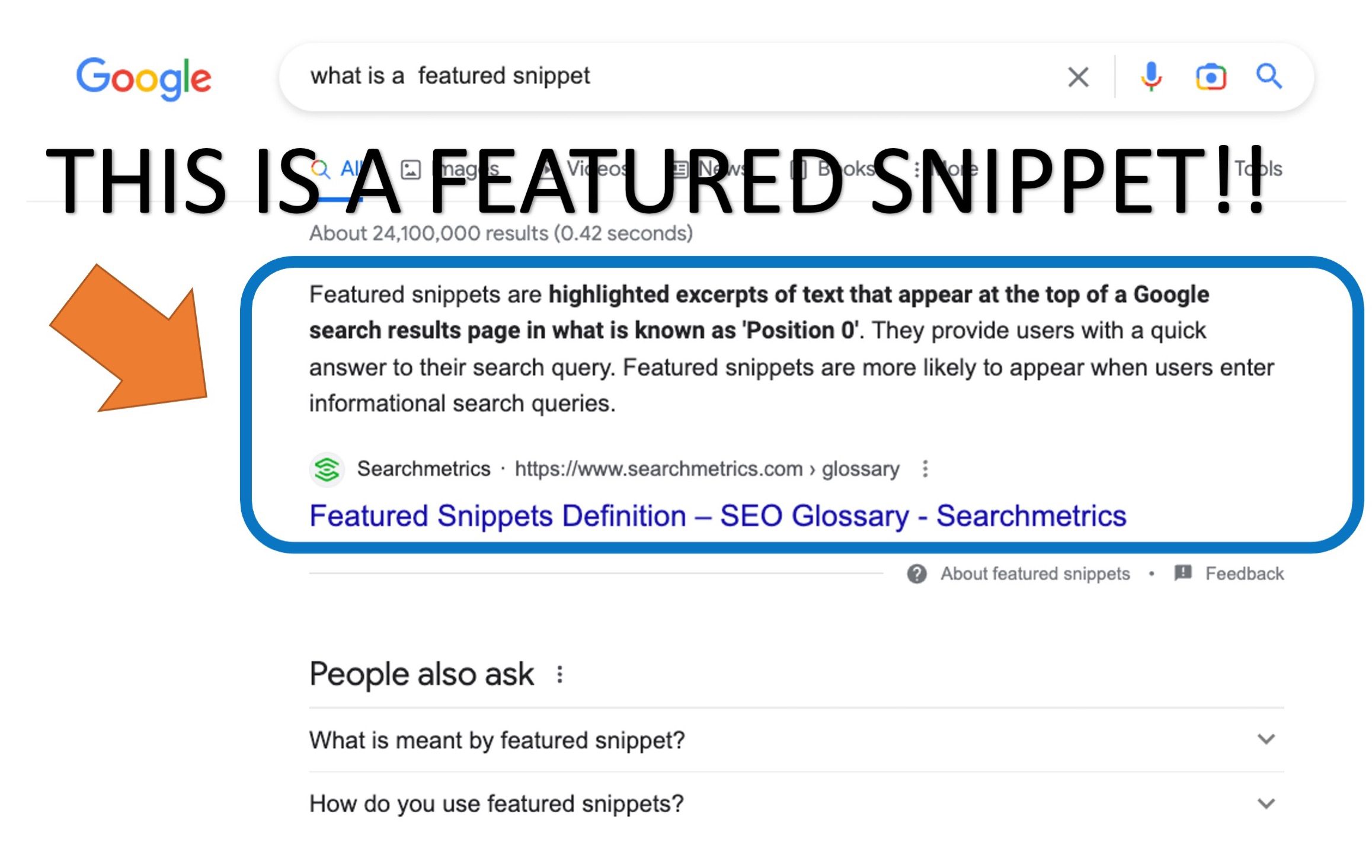How to Optimize Your Content to Rank in Google Snippets
Website optimization is an essential part of digital marketing. One of the most critical aspects of website optimization is ensuring that your content is ranked highly in Google’s search results. One way to achieve this is by targeting Google’s Featured Snippets, also known as “position zero” results. Ranking in Google featured snippets means lots and lots of website traffic. Below is an image of what Google’s featured snippets look like:

These are the answers that appear at the top of the search results, above all other listings. In this article, I’ll discuss several strategies for optimizing your website content to rank in Google Featured Snippets.
-
Understand the Intent of the Search
The first step in optimizing your website content for Featured Snippets is to understand the intent of the search. What is the user looking for? Are they trying to find information, a product or service, or something else? Once you understand the intent of the search, you can create content that directly addresses the user’s needs. This will help increase the likelihood that your content will be selected as a Featured Snippet.
-
Use Headers and Subheaders
When creating content for your website, it’s essential to use headers and subheaders. These will help break up the content into smaller, more manageable chunks. This makes it easier for the user to scan the content and find the information they’re looking for. Additionally, it will make it easier for Google to understand the structure of your content and to identify the most relevant information.
-
Use Lists and Tables
Lists and tables are another great way to structure your content for Featured Snippets. They make it easy for Google to identify the most relevant information, and they also make it easy for the user to scan the content and find the information they’re looking for. When creating lists and tables, be sure to use relevant keywords and phrases.
-
Optimize Your Content for Question-Based Keywords
Google’s Featured Snippets are often triggered by question-based keywords. For example, if someone searches for “How to optimize website content for Featured Snippets,” Google will look for content that directly addresses that question. To optimize your content for question-based keywords, be sure to use question phrases in your headlines and throughout your content.
-
Optimize Your Content for Long-Tail Keywords
In addition to question-based keywords, it’s also essential to optimize your content for long-tail keywords. These are more specific keywords that are less competitive but still relevant to your content. For example, instead of using the keyword “website optimization,” you could use the long-tail keyword “optimizing website content for Featured Snippets.” This will help increase the chances that your content will be selected as a Featured Snippet.
-
Use Schema Markup
Schema markup is a way to add additional information to your website that makes it easier for search engines to understand the content. It is a type of code that you can add to your website that can provide extra context and meaning to your content, making it more likely to be selected as a Featured Snippet.
-
Keep Your Content Up-to-date
Finally, it’s essential to keep your content up-to-date. Google’s search algorithm is constantly evolving, and it favors content that is fresh and relevant. By regularly updating your content, you’ll be more likely to be selected as a Featured Snippet.
Part of our secret sauce of generating roofing leads, HVAC leads, etc, is constantly generating, unique high-quality content that is optimized to rank in google featured snippets. This one technique helps us to generate more than 250,000 home improvement leads each and every year.
In conclusion, optimizing your website content for Google’s Featured Snippets is an essential aspect of digital marketing. By following the strategies outlined in this article, you’ll be able to create content that is more likely to be selected as a Featured Snippet. This will help increase your visibility in search results and drive more traffic to your website.



Comments are closed.